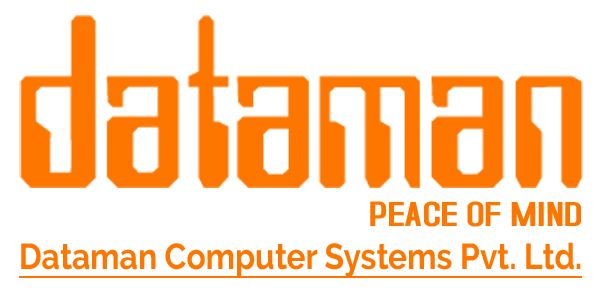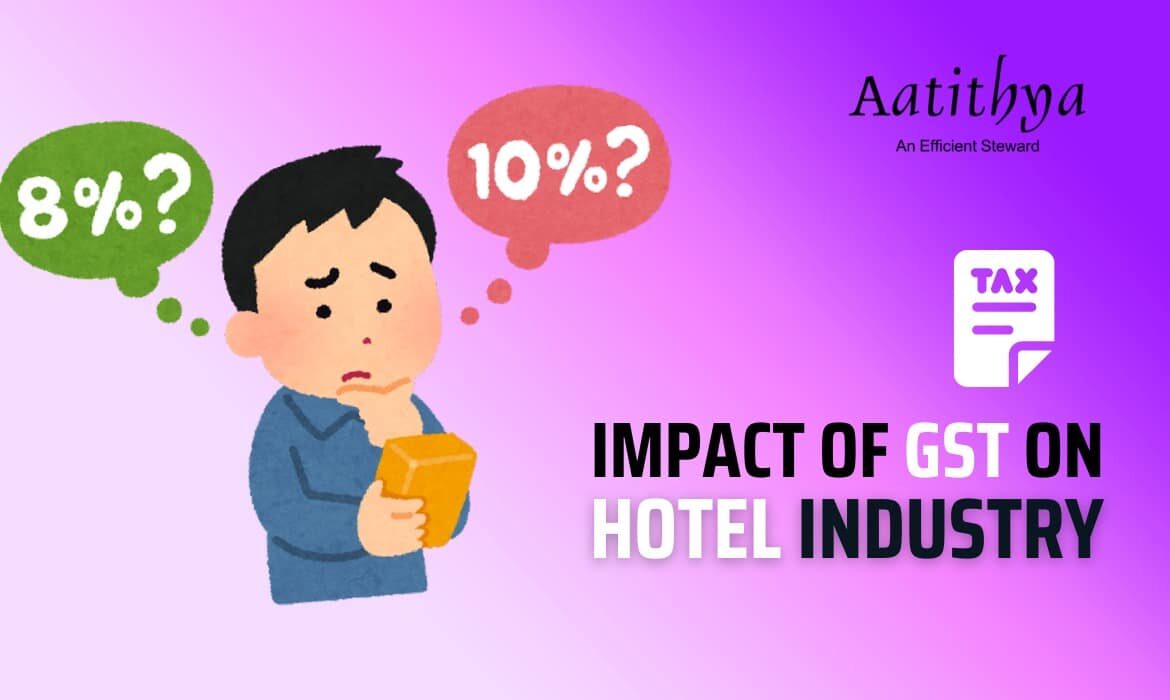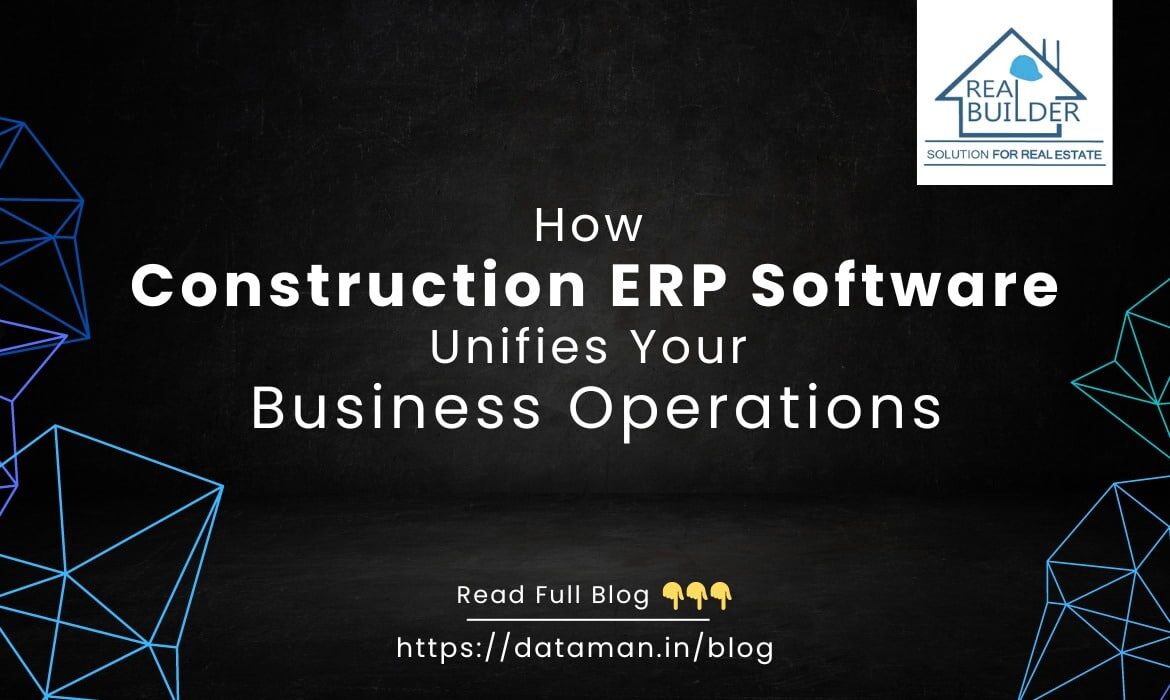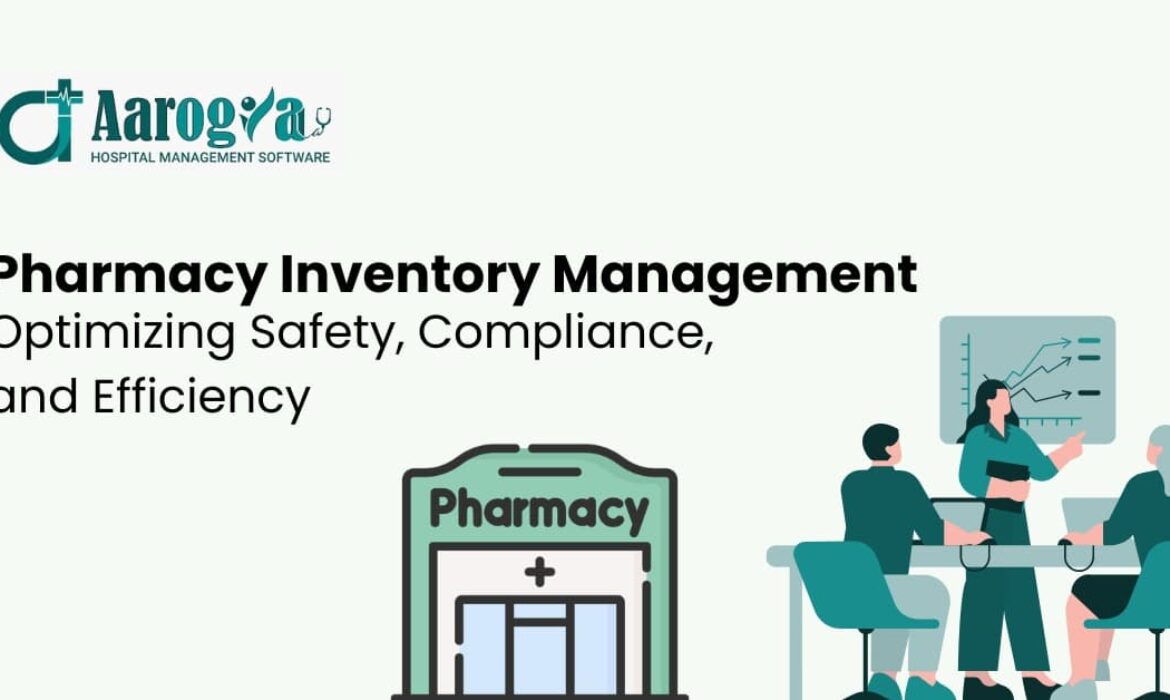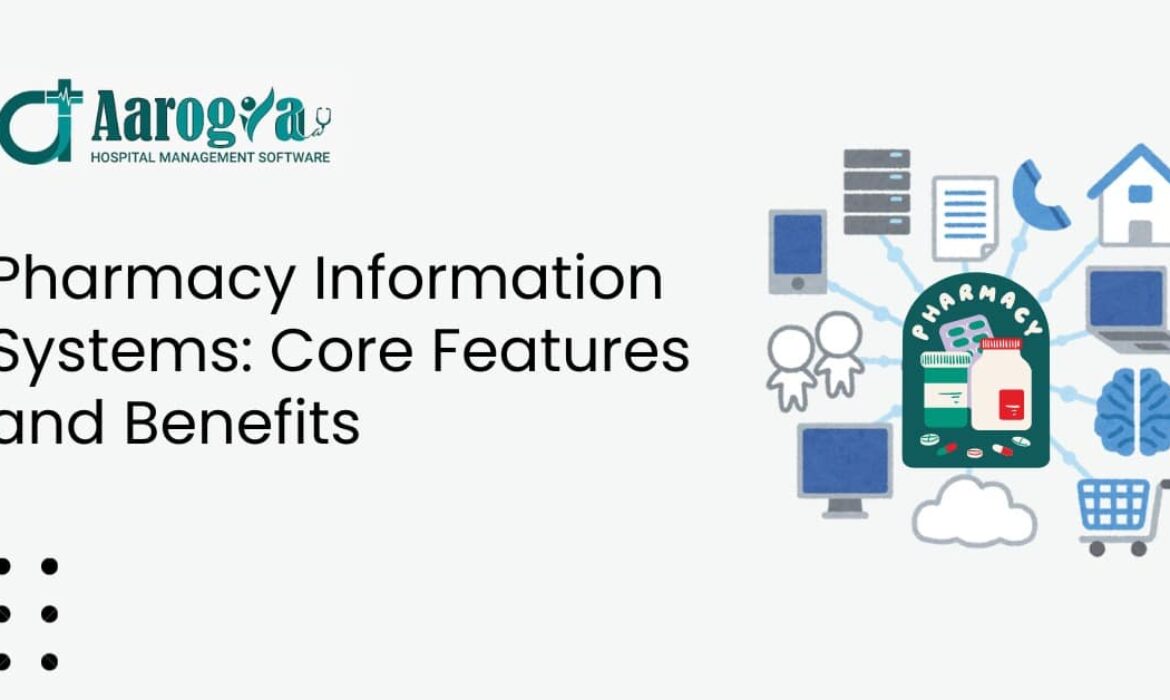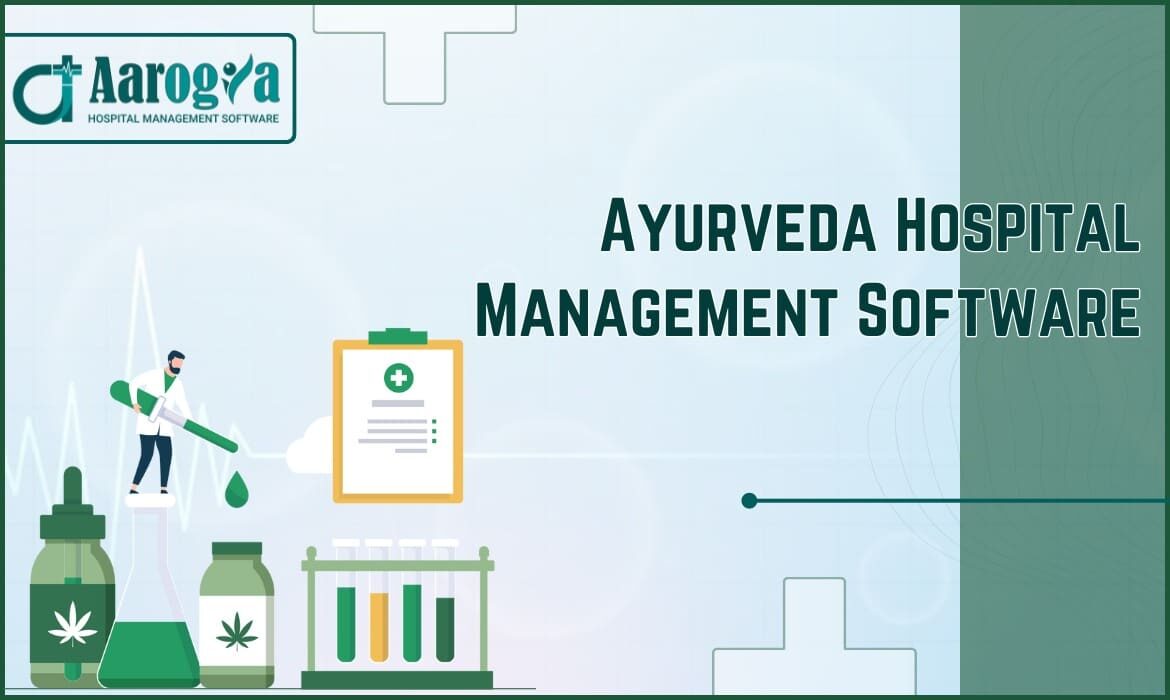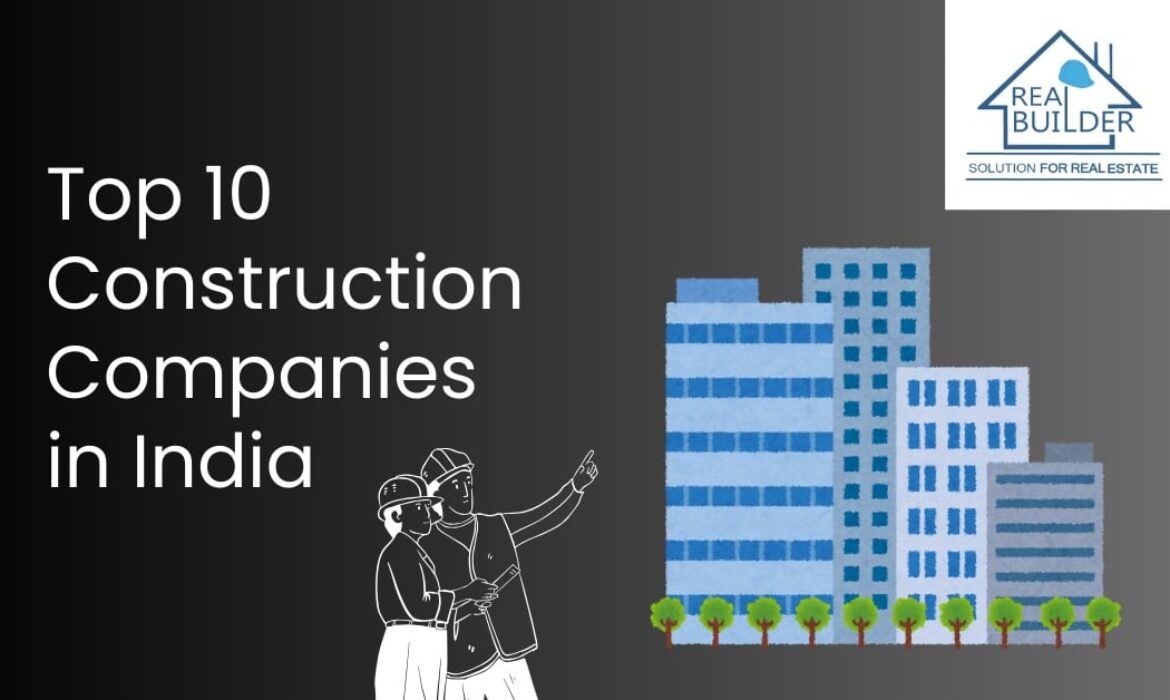Impact of GST on Hotel Industry
Impact of GST on Hotel Industry: On July 1, 2017, the Government of India implemented a new system of indirect taxation across the nation. It was Goods and Service Tax (GST) which came into existence in place of multiple taxes levied by the state and central government of India, i.e. excise duty, service tax, value added tax (VAT) and others. GST nullifies all indirect taxes.
While GST was first introduced in France in 1952, India’s GST system is modelled based on Canada’s dual GST system.
GST’s implementation significantly impacted all industries and businesses. The transition to a new tax system initially created confusion and uncertainty, leading to some resistance from various sectors, including the hotel industry.
In this blog, we will see the impact of GST on the hotel industry, hotel GST rate along with its advantages and disadvantages.
Understanding the Components of GST
To effectively understand GST, it’s crucial to understand its three primary components:
1. Central GST (CGST): This tax is collected by the Central Government on intra-state sales, meaning sales that occur within the same state or union territory.
2. State GST (SGST) or Union Territory GST (UTGST): Depending on the location, either SGST or UTGST is collected by the respective State or Union Territory Government on intra-state sales.
3. Integrated GST (IGST): IGST is levied by the Central Government on inter-state sales, that is, sales that occur across state boundaries.
In essence, GST ensures a uniform tax system across India, eliminating the complexities of multiple taxes that existed previously.
Hotel and Hospitality Industry
The tourism sector is a rapidly expanding industry in India, contributing significantly to the nation’s GDP. It is projected to grow from $136.2 billion in 2016 to $275.2 billion by 2025. However, despite the widespread awareness of GST, many remain unclear about its implications for the hotel industry. India’s implementation of GST on July 1, 2017, aligned it with over 160 other countries worldwide. The primary benefits of GST include reduced transaction costs for businesses, lower costs for consumers, and a more equitable tax system.
Taxes before GST on Hotel and Hospitality Industry
Prior to GST, the hospitality industry in India faced a complex tax regime, including multiple taxes such as VAT, luxury tax, and service tax. The government’s focus on promoting tourism through initiatives like ‘Swagat’, ‘Soochana’, ‘Suvidha’, ‘Suraksha’, ‘Sahyog’, ‘Samrachana’, and ‘Safari’ aligns with the country’s commitment to providing a memorable experience for visitors.
The World Travel and Tourism Council (WTTC) ranks India’s travel and tourism sector seventh globally in terms of its contribution to GDP. This industry is a major source of employment, generating 40.3 million jobs in 2016, a number expected to increase to 46.42 million by 2026.
GST on Hotel and Hospitality Industry
Regarding the impact of GST on Hotel rooms tariffs in India, the prevailing GST rate on hotel rooms tariffs are presented in the following table.
GST on Hotel Rooms ( Effective from October 01, 2019)
| Tariff Per Night (Hotel Bill) | GST Rate |
Less than Rs 1000 | 0% (Exempted) |
| Between Rs 1000 to 7500 | 12% |
Above Rs 7500 | 18% |
GST on Hotel Rooms ( before from October 01, 2019)
| Tariff Per Night (Hotel Bill) | GST Rate |
Less than Rs 1000 | 0% (Exempted) |
| Between Rs 1000 to 2499 | 12% |
Between Rs 2500 to 7499 | 18% |
Above Rs 7500 | 28% |
GST on Banquets
| GST on Banquets | 18% |
GST on Restaurants
| GST on AC Restaurants within Hotel | 18% |
| Composition scheme if takeaway is available | 5% |
Advantages of GST
The implementation of GST has brought several advantages to the hotel industry, which are as follows:
- Simplified Administration: GST has consolidated multiple taxes into a single system, reducing the administrative burden on hotel management. This means less paperwork, fewer compliance requirements, and more time to focus on core business activities.
- Increased Customer Attraction: Lower taxes on hotel bills (because of GST on hotel bill) make staying at hotels more affordable for customers. This can lead to increased occupancy rates and higher revenue for hotels.
- Enhanced Transparency: The GST system is designed to be transparent, making it easier for both customers and hoteliers to understand the structure of bills. This reduces confusion and disputes, improving the overall customer experience.
- Reduced Tax Evasion: The new GST structure has made tax avoidance and evasion more difficult. This ensures that hotels pay their fair share of taxes, leading to increased government revenue and a more equitable tax system.
Challenges Faced by the Hotel Industry Under GST
There’s a silver lining to every cloud. The introduction of GST, while aimed at simplifying the tax system, presented several challenges for the hotel industry.
- Initial Ambiguity: The transition to a new tax system initially created confusion and uncertainty among businesses, including hotels. This led to a degree of resistance and reluctance to fully embrace the new system.
- High GST Rates for Luxury Hotels: Luxury hotels, with their higher room rates, face a higher GST slab rate. This can impact their profitability and competitiveness, especially in a price-sensitive market.
- Increased Costs: The hotel industry faces rising costs regardless of their approach to workforce management. Whether they opt for hiring new skilled employees or investing in training existing staff, the overall expenditure is likely to increase.
Conclusion
Impact of GST on hotel industry is significant. While it has offered several benefits, such as reduced overall costs for customers and input tax credits for businesses, it has also presented challenges, particularly for hotels with high room tariffs and the exclusion of liquor from the GST regime.
To fully realize the potential of GST and address these challenges, it is essential to consider the inclusion of liquor in the GST regime, a review of the GST rate for hotels, and continuous efforts to simplify compliance procedures. By addressing these issues, the GST regime can be optimized to benefit both customers and the hotel and restaurant industry, fostering growth and prosperity.
How Construction ERP Software Unifies Your Business Operations
As a construction company grows, so does the complexity of its operations. More projects, larger teams, and increasing regulatory requirements can make it difficult to manage everything manually. This is where construction ERP software comes in.
A construction ERP system is a comprehensive software solution that integrates all aspects of your business, from project planning and budgeting to resource management and financial reporting. By streamlining your workflows and providing real-time visibility into your operations, a construction ERP can help you:
- Improve efficiency and productivity
- Reduce costs
- Enhance collaboration
- Make better decisions
- Meet regulatory compliance requirements
If you’re looking for a way to unify your business operations and take your construction company to the next level, a construction ERP is the solution.
What is Construction ERP Software
Construction ERP software is a specialized type of Enterprise Resource Planning (ERP) software designed to meet the unique needs of the construction industry. It serves as a centralized platform for managing and integrating various aspects of construction projects, including:
- Material supply chain: Procurement, inventory management, and quality control.
- Operations: Scheduling, resource allocation, and project management.
- Site reports: Progress tracking, safety management, and documentation.
- Finances: Accounting, budgeting, and cost control.
- Fabrication: Manufacturing and assembly processes.
- Human resources: Payroll, time tracking, and employee management.
By collecting and analyzing relevant data, construction ERP software provides valuable insights to help businesses optimize their operations, reduce costs, and improve project outcomes.
At its core, Construction ERP software is a system designed to streamline and automate the key functions of a construction project. This includes Project Management, Financial Management, Supply Chain Management, Document Management, Risk Management.
Read More: Top 10 Construction Companies in India
Key Components of Construction ERP Software
Construction ERP software typically includes the following key components:
1. Project-Driven Approach:
- Centralized project management: A robust platform to plan, track, and manage projects from start to finish.
- Task and resource allocation: Efficiently assign tasks and resources to ensure timely completion.
- Progress tracking: Monitor project progress in real-time to identify potential issues and adjust plans accordingly.
2. Client Contract Lifecycle Management:
- Contract management: Store, manage, and track contracts throughout their lifecycle.
- Change order management: Efficiently handle and process change orders to avoid delays and cost overruns.
- Invoicing and payments: Generate accurate invoices and track payments to ensure timely cash flow.
3. Subcontracting:
- Subcontractor management: Manage relationships with subcontractors, including contract negotiation, payment processing, and performance evaluation.
- Purchase order management: Create and track purchase orders to ensure timely delivery of materials and services.
4. Plant & Equipment:
- Asset management: Track and manage plant and equipment assets, including maintenance schedules, depreciation, and disposal.
- Equipment rental: Manage equipment rental agreements and track rental income.
5. Staff/Labour Timesheets and Payroll:
- Time tracking: Accurately track employee work hours and productivity.
- Payroll processing: Automate payroll calculations and payments, ensuring compliance with labour regulations.
- Employee management: Manage employee information, including contact details, job roles, and performance reviews.
6. Job-to-Tate Accounting and Reporting:
- Financial management: Track project costs, revenue, and profitability.
- Job costing: Allocate costs to specific projects to assess their financial performance.
- Reporting: Generate comprehensive reports on project performance, financial results, and resource utilization.
Read More: Top 5 Best Cement in India with Cement Bag Latest Prices
Benefits of Construction ERP Software
Construction ERP software is a valuable tool for businesses in the construction industry. Here are some of the key benefits:
Improved Efficiency and Productivity
- Centralized information: Construction ERP software provides a centralized platform for managing various aspects of construction projects, including scheduling, cost management, inventory management, HR, and payroll administration.
- Automated operations: By automating routine tasks, construction ERP software frees up time for more strategic activities such as design, marketing, and development.
- Enhanced project management: Construction ERP software can help optimize project management by providing tools for planning, scheduling, resource allocation, and progress tracking.
Enhanced Communication and Collaboration
- Effective internal communication: Construction ERP software can improve communication and collaboration between departments by providing features such as chat forums, video conferencing, and shared calendars.
- Team-based project management: Teams can work together more effectively on projects using construction ERP software, which can lead to faster problem-solving and improved outcomes.
Increased Flexibility and Accessibility
- Mobile responsiveness: Many modern construction ERP systems are mobile-friendly, allowing users to access project data and other information on their smartphones or tablets.
- Remote work: Construction ERP software can enable remote work, which can be particularly beneficial during challenging times or for geographically dispersed teams.
Improved Decision-Making and Strategic Planning
- Data-driven insights: Construction ERP software can provide valuable data-driven insights that can help businesses make more informed decisions and develop effective strategies.
- Enhanced marketing: By analyzing business and financial KPIs, construction ERP software can help businesses develop more targeted and effective marketing strategies.
Cost Savings and Improved Profitability
- Optimized resource allocation: Construction ERP software can help businesses optimize the allocation of resources, which can lead to cost savings.
- Accurate cost estimation: By providing tools for accurate cost estimation, construction ERP software can help businesses avoid costly mistakes and improve profitability.
Why Choose Real Builder Construction ERP Software
When selecting a construction ERP solution, it’s crucial to choose a partner that can provide the right tools and support to meet your specific needs. Real Builder Construction ERP Software is designed to deliver excellence in construction project management, offering a robust platform that can help you achieve your business goals. Real Builder is considered one of the best ERP software for the construction industry.
The Software offers a comprehensive solution to automate and optimize your construction operations. By leveraging advanced technology, a user-friendly interface, customization options, and superior support, Real Builder provides the tools you need to achieve project success.
Here’s why Real Builder stands out:
- Advanced Technology: Real Builder is built on cutting-edge technology, ensuring you have access to the latest features and capabilities. This means you can benefit from automation, data analytics, and real-time insights to make informed decisions.
- User-Friendly Interface: Real Builder’s intuitive interface is designed to be easy to use, even for those with limited technical expertise. This reduces the learning curve for your team and ensures they can quickly adopt the software and start seeing results.
- Customization Options: Every construction project is unique, and Real Builder offers high levels of customization to tailor the software to your specific needs. From workflows and reporting to integrations with other systems, Real Builder can be configured to fit seamlessly into your existing processes.
- Superior Support: Real Builder provides dedicated customer support to assist you throughout your journey. Our team of experts is available to answer your questions, provide training, and help you troubleshoot any issues.
Read More: Understanding the Different Types of Tender in Construction
Conclusion
Construction ERP software is no longer a luxury but a necessity for businesses operating in the modern construction industry. Its ability to streamline operations, improve project management, and enhance decision-making offers a significant competitive advantage. By centralizing and integrating various aspects of construction projects, ERP software provides a comprehensive view of the entire lifecycle, leading to increased efficiency, reduced costs, and improved overall performance.
Feel free to comment your thoughts. In case of any query, contact us.
Pharmacy Inventory Management: Optimizing Safety, Compliance, and Efficiency
Pharmacy Inventory management is more than just a buzzword—it’s a critical aspect of efficient pharmacy operations. Whether you run a small independent pharmacy or a large chain, effective inventory management directly impacts patient care, regulatory compliance, and overall business success.
A well-organized pharmacy inventory system is essential for maintaining adequate stock levels, preventing stockouts, and minimizing wastage. It also enables pharmacies to optimize their purchasing decisions, reduce costs, and improve overall profitability.
In this blog, we’ll explore the science and art behind managing pharmacy inventory, its significance, key features, and the benefits of using our pharmacy management software.
What Is Pharmacy Inventory Management?
A pharmacy inventory management system is a comprehensive software solution designed to optimize and automate inventory operations. By effectively managing medication stock, it helps reduce costs, improve efficiency, and minimize overstocking and lost opportunities. This delicate balance ensures patients receive timely care while maintaining accurate records.
At its core, pharmacy inventory management involves tracking and controlling the stock of medications and related items. This process ensures that your pharmacy maintains adequate supplies to meet patient needs while minimizing excess inventory that can tie up valuable resources.
Significance of Inventory Management
Inadequate inventory management can lead to a cascade of problems within a pharmacy. Stockouts, a common consequence of poor inventory control, can result in significant disruptions to patient care. Conversely, overstocking can tie up valuable capital in unused inventory, leading to increased carrying costs and reducing profitability.
Both stockouts and overstocking can have severe financial repercussions for pharmacies. Stockouts can result in lost sales, as patients may choose to fill their prescriptions at competing pharmacies. Additionally, the cost of expedited shipping or emergency purchases to address stockouts can escalate expenses. On the other hand, overstocking can lead to increased storage costs, product obsolescence, and potential write-offs.
With accurate inventory records, pharmacists can track expiry dates of medicines. It prevents them from dispensing outdated or compromised drugs. Moreover, timely replenishment of stock helps to minimize medication shortages, which reduces the risk of treatment interruptions and improves patient outcomes.
Pharmacy Inventory Management: Key Features
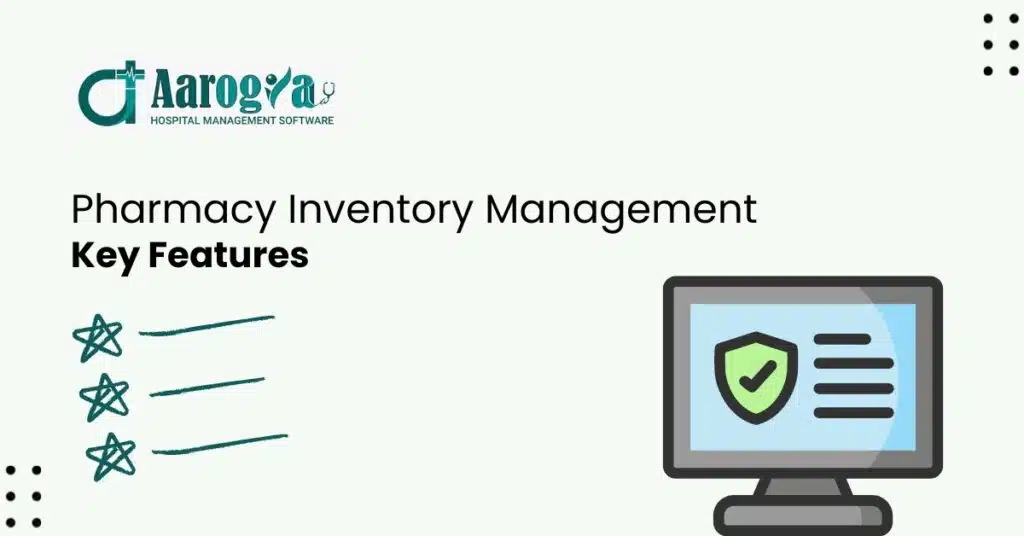
1. Automated Stock Management
This feature automatically triggers purchase orders based on predetermined reorder points and lead times. It helps prevent stockouts and ensures a steady supply of medications.
2. Real-Time Inventory Tracking
Inventory management in pharmacy lets you view and manage stock in real-time. Accurate and up-to-date inventory information is crucial for efficient operations. A real-time inventory tracking system provides visibility into stock levels, locations, and expiration dates.
3. Expiration Date Management
Effective expiration date management is essential to prevent the dispensing of expired medications. The system should track expiration dates and provide timely alerts for impending expiration.
4. Lot Number Tracking
Lot number tracking is essential for product recalls, traceability, and regulatory compliance. The system captures and tracks lot numbers for each medication.
5. Barcode Scanning
Integrating barcode scanning technology streamlines the inventory process, reducing errors and improving efficiency. Barcodes can be used to track the movement of medications from receipt to dispensing.
6. Integration with POS Systems
A well-integrated pharmacy inventory management system should seamlessly connect with point-of-sale (POS) systems. This ensures that inventory records are updated accurately with each sale.
7. Reporting and Analytics
Comprehensive reporting and analytics capabilities provide valuable insights into inventory trends, usage patterns, and performance metrics. This information can be used to optimize inventory management strategies.
8. Security and Compliance
The system should adhere to industry-specific regulations, such as HIPAA and FDA requirements, to protect patient data and ensure compliance.
9. Mobile Access
Enabling mobile access to the inventory management system allows pharmacists and staff to access information and perform tasks from anywhere.
10. Vendor Management
A robust vendor management feature helps streamline interactions with suppliers, including purchase order generation, invoice management, and performance tracking.
Benefits of Pharmacy Inventory Management
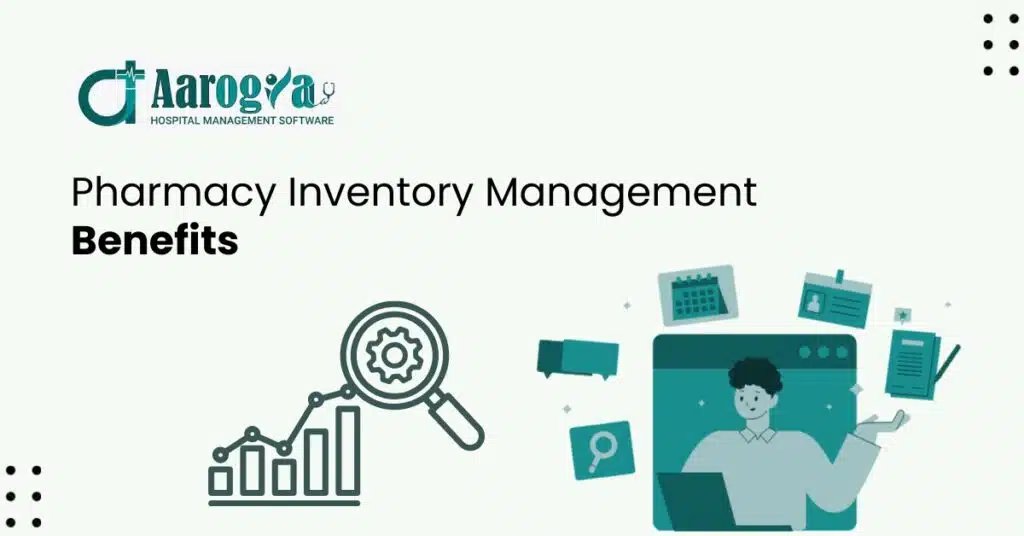
Financial Benefits
– Reduced Costs: Efficient inventory management can lead to significant cost savings. By minimizing overstocking and minimizing stockouts, pharmacies can reduce the amount of money tied up in inventory and avoid the costs associated with expedited orders or lost sales.
– Increased Revenue: A well-managed inventory can help pharmacies increase revenue. By ensuring that the right products are available at the right time, pharmacies can meet customer demand and avoid lost sales due to out-of-stock items.
Operational Benefits
– Improved Efficiency: A robust inventory management system can streamline pharmacy operations. By automating tasks such as inventory tracking, ordering, and receiving, pharmacies can reduce manual errors and improve overall efficiency.
– Enhanced Accuracy: Accurate inventory records are essential for maintaining a smooth-running pharmacy. By using advanced inventory management software, pharmacies can ensure that their records are up-to-date and accurate, reducing the risk of stockouts or overstocks.
Patient Safety Benefits
– Reduced Risk of Medication Errors: Effective inventory management is crucial for ensuring patient safety. By maintaining accurate inventory records and implementing proper storage and handling procedures, pharmacies can minimize the risk of medication errors, such as dispensing the wrong medication or providing expired products.
– Improved Patient Satisfaction: When pharmacies have the right medications in stock, patients are more likely to be satisfied with their experience. This can lead to increased patient loyalty and positive word-of-mouth referrals.
Consider Choosing Aarogya Pharmacy Inventory Management Software
Aarogya is the industry leader in pharmacy inventory management. Aarogya’s advanced solution not only tracks inventory but also automates ordering, forecasts demand, and provides actionable insights. By considering the unique needs of each pharmacy, Aarogya helps businesses optimize their stock levels and minimize costs.
The system’s seamless integration with other systems gives it a competitive edge. Additionally, its commitment to data security ensures compliance with national and international standards, such as HIPAA, and HL7.
Read More: Top 5 Hospital Management Software in India
Conclusion
Efficient management of pharmacies is the need of the hour. It brings transparency in the process, boosting productivity and efficiency of the pharmacy staff. Some of the crucial benefits of the pharmacy inventory management software are real time tracking of stock and medicines, expiry tracking, demand forecasting, valuable insights, and many more. These systems can help you achieve optimal inventory management.
Feel free to contact us if you have any questions or need further information!
Pharmacy Information Systems: Core Features and Benefits
Pharmacy is an integral part of any hospital, handling a vast array of medications, patient data, and complex workflows. Inefficiencies in this department can lead to medication errors, delays in patient care, and financial losses. A Pharmacy Information System (PIS) emerges as a transformative solution, streamlining operations, enhancing patient safety, and optimizing drug management.
This comprehensive guide explores the intricacies of a PIS, its indispensable features, and the profound impact it can have on your hospital.
Understanding Pharmacy Information Systems (PIS)
A Pharmacy Information System (PIS) is a sophisticated software solution designed to manage and optimize various aspects of pharmacy operations within a healthcare facility. It serves as a centralized repository for medication data, patient information, and pharmacy workflows, enabling efficient and accurate drug management.
Key Components of a PIS:
Prescription Management: Streamlined electronic prescription processing, verification, and order entry.
Inventory Control: Real-time tracking of medication stock levels, automated reordering, and expiration date management.
Medication Administration: Integration with electronic health records (EHRs) for accurate medication administration and barcode scanning.
Drug Interaction Checking: Advanced algorithms to identify potential drug interactions and allergies.
Patient Profiling: Comprehensive patient medication history and allergy information.
Reporting and Analytics: Generate insightful reports on medication usage, inventory trends, and cost analysis.
Benefits of Implementing a Pharmacy Information System
A robust PIS offers a multitude of benefits that contribute to improved patient care, operational efficiency, and financial sustainability.
Enhanced Patient Safety:
- Reduced medication errors through automated checks and alerts.
- Improved drug interaction monitoring for patient safety.
- Accurate and up-to-date patient medication profiles.
- Streamlined medication administration processes.
Operational Efficiency:
- Automated workflows for prescription processing, dispensing, and inventory management.
- Reduced manual data entry and paperwork.
- Optimized medication distribution and storage.
- Faster turnaround times for medication orders.
Financial Improvement:
- Reduced drug wastage through effective inventory management.
- Cost-effective medication procurement and distribution.
- Improved charge capture and revenue cycle management.
- Enhanced financial reporting and analysis.
Clinical Decision Support:
- Real-time access to medication information and patient data.
- Clinical decision support tools for medication selection and dosing.
- Integration with other healthcare systems for comprehensive patient information.
Essential Features of a Pharmacy Information System
To maximize the benefits of a PIS, it is crucial to select a system that offers the following core features:
- User-Friendly Interface: Intuitive design for efficient navigation and data entry.
- Comprehensive Drug Database: Up-to-date information on medications, including dosages, indications, and interactions.
- Integration Capabilities: Seamless integration with EHRs, laboratory systems, and other healthcare applications.
- Barcode Technology: Support for barcode scanning for medication administration and inventory management.
- Automated Dispensing: Integration with automated dispensing cabinets for efficient medication retrieval.
- Robust Reporting and Analytics: Customizable reports for performance monitoring and decision-making.
- Security and Compliance: Adherence to data privacy and security regulations.
Selecting the Right Pharmacy Information System
Choosing the appropriate PIS is a critical decision that requires careful evaluation of your hospital’s specific needs and requirements. Consider the following factors:
- Hospital Size and Complexity: The PIS should align with the scale of your pharmacy operations.
- Budgetary Constraints: Assess the cost-effectiveness of different PIS options.
- Vendor Reputation and Support: Choose a reputable vendor with reliable customer support.
- Scalability and Flexibility: Ensure the PIS can accommodate future growth and changes.
- Implementation and Training: Consider the vendor’s implementation process and training support.
Overcoming Challenges in PIS Implementation
Implementing a PIS can present challenges, but with proper planning and execution, these obstacles can be overcome. Common challenges include:
- Resistance to Change: Address concerns and provide adequate training to staff.
- Data Migration: Develop a comprehensive data migration plan to ensure accuracy.
- Integration with Existing Systems: Plan for seamless integration with EHRs and other systems.
- Staff Training: Provide comprehensive training to maximize system utilization.
The Future of Pharmacy Information Systems
The healthcare industry is undergoing rapid digital transformation, and PIS technology is at the forefront of this evolution. Future trends include:
- Artificial Intelligence Integration: Leveraging AI for predictive analytics and medication optimization.
- Mobile Accessibility: Accessing PIS functionalities through mobile devices for improved efficiency.
- Cloud-Based Solutions: Enhanced scalability, accessibility, and cost-effectiveness.
- Integration with Wearable Devices: Real-time patient data and medication monitoring.
Conclusion
A Pharmacy Information System is an indispensable tool for modern hospitals, enabling efficient medication management, enhanced patient safety, and improved operational efficiency. By carefully selecting and implementing a PIS, healthcare organizations can optimize pharmacy workflows, reduce errors, and deliver high-quality patient care.
Night Audit: Steps in Night Audit process in Front Office
The night audit is an underestimated process of a hotel’s operations. This meticulous process is crucial for ensuring the smooth functioning of the entire hotel operations. A well-executed night audit provides accurate financial data, optimizes room occupancy, and sets the stage for the next day’s operations. In essence, the night audit in front office is the backbone of a hotel’s performance.
However, the night audit process is often a complex and time-consuming task. Doing it Manually could lead to errors, inefficiencies, and delays, which can result in financial discrepancies, guest dissatisfaction, and operational challenges.
Our hotel management software offers a comprehensive solution to these challenges. By automating the night audit process, our software solution significantly reduces manual effort, minimizes errors, and provides real-time insights into hotel performance.
Let’s delve deeper into the intricacies of the night audit process and explore how our software can help you streamline your hotel’s operations.
Understanding the Night Audit Process
What is Night Audit?
A night audit is a comprehensive daily review of a hotel’s financial transactions. It’s a critical process that takes place every day after that day’s business is concluded, typically during the quiet hours of the night. During this process, all financial data from various departments, including the front desk, restaurants, and other revenue centers, is collected, verified, and updated to guest accounts.
Purpose of Night Audit
The primary purpose of the night audit is to ensure the accuracy of financial records. By meticulously reviewing and balancing accounts, hotels can:
- Generate accurate financial reports: These reports provide valuable insights into the hotel’s daily, weekly, and monthly performance.
- Maintain guest satisfaction: Correctly calculated guest bills prevent disputes and enhance guest satisfaction.
- Optimize revenue management: By analyzing occupancy rates, room revenue, and other metrics, hotels can make informed decisions to maximize profitability.
- Identify potential discrepancies: The night audit process helps uncover errors or inconsistencies in financial data, allowing for timely corrections.
Importance of Accuracy
Accuracy is paramount in the night audit process. Any errors can lead to financial losses, guest dissatisfaction, and operational inefficiencies. A precise night audit ensures:
- Financial integrity: Accurate financial records are essential for tax compliance, budgeting, and investor relations.
- Operational efficiency: Timely and correct information supports smooth daily operations and decision-making.
- Guest trust: Correct billing and account management build guest loyalty and positive reviews.
Night Audit Posting Formula
The core formula used in night auditing is a fundamental accounting equation:
Previous Balance (PB) + Debits (DR) – Credits (CR) = Net Outstanding Balance (NOB)
This formula is applied to each guest account to determine the balance at the end of the day.
- Previous Balance: The total amount owed by the guest at the beginning of the day.
- Debits: Charges incurred by the guest during the day (e.g., room rate, food, beverages, etc.).
- Credits: Payments made by the guest during the day.
- Net Outstanding Balance: The final amount owed by the guest at the end of the day.
Steps in the Night Audit Process
The night audit is a critical function within the front office department, ensuring accurate financial records and smooth daily operations. This process involves several essential steps:
Step 1: Balancing Accounts
The night audit begins with a meticulous review of all guest accounts. This includes reconciling charges incurred throughout the day, such as room rates, food and beverage expenses, and additional services.
Payments made by guests, whether in cash, credit card, or other forms, must also be carefully accounted for. It is crucial to ensure that every financial transaction is accurately recorded and balanced to maintain the hotel’s financial integrity.
Our hotel management software — Aatithya — streamlines this process by automatically calculating charges, applying payments, and generating detailed reports, saving time and minimizing errors.
Step 2: Room Status Verification
Accurately determining room occupancy is an important feature of the night audit process. The night auditor verifies the status of each room, classifying them as occupied, vacant, dirty, or out of order.
Check-ins and check-outs are reconciled against the reservation system to ensure consistency. No-shows are identified and recorded, and appropriate actions are taken, such as releasing the room or offering it to other guests.
Aatithya hotel management software provides real-time room status updates, enabling efficient room allocation and maximizing occupancy rates.
Occupancy rate is the percentage of occupied rooms compared to the total number of available rooms. It includes historical occupancy rates, seasonal trends, room type occupancy, and competitor data.
Step 3: Generating Reports
The night audit process produces a range of essential reports that provide valuable insights into the hotel’s performance. These reports include occupancy rates, revenue generated, average daily rate (ADR), and other key metrics. Detailed financial reports are generated to monitor the hotel’s financial health.
Aatithya hotel software offers customizable reporting options, allowing hotel management to access the specific information they need to make informed decisions.
Step 4: Closing the Day
The final step in the night audit process involves completing necessary tasks to prepare for the following day. This includes creating reports for management, balancing cash drawers, and ensuring that all systems and equipment are functioning correctly. By effectively closing out the day, the hotel can start the next day with efficiency and accuracy.
Our hotel management software automates many of these end-of-day tasks. It automatically posts account details from the front office to the account module.
Challenges in Night Audit and How Our Software Helps
- Manual Data Entry: The time-consuming process of manually inputting data from various sources into the system, increasing the risk of errors.
- Reconciliation Errors: Discrepancies between room status, guest accounts, and financial records can be challenging to identify and resolve.
- Time Constraints: The night audit must be completed within a specific timeframe, often under pressure, leaving little room for error.
- Data Integrity: Ensuring the accuracy and consistency of data across multiple systems is a complex task.
- Reporting Delays: Generating reports manually can be time-consuming, delaying critical information for management.
Our Hotel Management Software Solution
Our hotel management software is designed to streamline the night audit process and address these challenges head-on. By automating key tasks and providing real-time data, our software empowers your staff to perform accurate and efficient audits.
Key Features
- Automated Data Import: Our software seamlessly integrates with various hotel systems, automatically importing data to eliminate manual entry errors.
- Real-Time Reconciliation: Advanced algorithms quickly identify and resolve discrepancies between room status, guest accounts, and financial records.
- Intuitive Interface: A user-friendly design ensures that the night audit process is efficient and easy to navigate.
- Robust Reporting: Generate comprehensive reports with just a few clicks, providing valuable insights into hotel performance.
- Data Security: Protect sensitive guest information with advanced security measures.
Benefits
By implementing our hotel management software, you can:
- Automate repetitive tasks, freeing up staff time for more valuable duties.
- Reduce human error and ensure the integrity of financial data.
- Access real-time reports to make informed decisions.
- Minimize billing errors and provide exceptional guest experiences.
- Identify revenue opportunities and prevent financial losses.
Also Read: Hotel Billing Software: In-depth Guide for Hotel Professional
The Bottom Line
The night audit process is a critical function within the front office of any hotel. It ensures financial accuracy, operational efficiency, and guest satisfaction. By understanding the key steps involved—from room status verification to financial reconciliation—hotels can streamline their operations and generate valuable reports for management.
A robust hotel management software can significantly simplify the night audit process, providing a daily review of guest account transactions recorded against revenue center transactions. The routine helps guarantee the accuracy, reliability and thoroughness of front office accounting.
Request a Free Demo today to see how our night audit features can automate and optimize your hotel operations and maxmize revenue. Contact us today to learn more.
FAQs
What is a front office night audit?
Night Audit in a hotel is the comprehensive daily review of a hotel’s financials. All financial data of the day from all departments are collected, reviewed, and posted to the accounts module.
What are the 5 major functions of the night audit?
1. Financial Reconciliation
2. Generate accurate financial reports
3. Maintain guest satisfaction
4. Identify potential discrepancies
5. Security Oversights
What is the role of the night auditor?
Night auditors are detail-oriented financial experts, crucial for accurate hotel accounting. With strong hospitality and accounting knowledge, they reconcile daily transactions, handle discrepancies, and often hold senior front desk roles.
Understanding the Different Types of Tender in Construction
In the Union Budget 2024, the government has allocated 11.11 lakh crores to the infrastructure sector, 10 lakh crores to PM Awas Yojana 2.0 and 26000 crores to road connectivity projects. It clearly underlines the government’s focus towards the construction and infrastructure industry.
Infact, India is the third largest construction market in the world with an impressive 7–8% growth rate annually.
The projects in the construction industry are awarded through a transparent system that offers equal and fair opportunities to all contractors, real estate developers and construction companies. This system is well-known as tendering and a formal offer to submit bids for a specific project is called a tender.
There are various types of tender and choice of tender type significantly impacts the project’s outcome, affecting factors like cost, quality, and project timeline.
Let’s dive deeper into the tenders and different types of tender in construction. It will provide key insights for real estate developers, construction managers, project managers, and Real estate companies.
What is a Tender?
A tender is a formal offer or invitation from the eligible contractors or suppliers to submit bids in response to a request for proposal (RFP) issued by an government or any organization seeking to procure goods, services, or works. These bids are to be submitted within the given deadline. It is a written document that outlines the scope of work, specifications, and the proposed price for the project.
After careful evaluation of all the bids, the organization awards the project to deserving contractors. Generally, this process is put forward for large and complex projects.
What is Request for Proposal (RFT)
RFT and tender may seem similar and even sometimes it may get a little bit confusing to differentiate between them. However, if you understand both terms separately, it will be easier to understand.
A request for proposal (RFT) is a formal request or invitation from the contractors, suppliers or real estate developers to submit bids for the completion of a specific project. RFTs are issued by the governments or private organizations who have some work to be done, bidders are interested players to complete the work. In private firms, RFT is known as request for proposal (RFP).
The RFT comprises several key documents:
- Outlines the rules and procedures governing the tendering process and response submission.
- Specifies the format and content requirements for supplier responses, including schedules and necessary details.
- Clearly defines the goods and services required by the buyer.
- Establishes the methodology for assessing and comparing supplier responses.
- Details the legal terms and conditions of the contract to be awarded to the successful supplier.
Types of Tender in Construction Industry
Tenders can be classified based on various criteria, such as the number of bidders, the tendering process, and the contract type. Let’s explore the different types of tender in detail.
Open Tender
It is a principal tendering procedure which is accepted by both government as well as private sectors. The client or customer advertises the tender openly in newspapers, websites, digital media or on e-tendering platforms. The eligibility criteria is provided in the advertisement with some other important information like tender open date, closing date, how to apply etc.
Key Highlights of Open Tender
- An open invitation is extended to all eligible contractors to submit bids.
- Provides maximum competition and transparency.
- Suitable for standard projects with clear specifications.
- Can be time-consuming due to the evaluation of multiple bids.
Selective Tender
This type of tender was introduced to overcome the limitations of open tender. It is also seen as an alternative to open tender. The purpose of introducing selective tender is to increase the quality bids.
Key Highlights of Selective Tender
- A limited number of pre-qualified contractors are invited to bid.
- Ensures a higher level of expertise and reduces evaluation time.
- Ideal for complex or specialized projects.
- May limit competition and potentially increase costs.
Negotiated Tender
Negotiated tendering is prevalent in the engineering and construction industry due to the complex nature of projects that often require extensive pre- and post-contract collaboration.
Unlike traditional competitive bidding, negotiated tendering involves direct negotiations between the buyer and a selected supplier. This approach is particularly suited for intricate projects where close cooperation is essential to define project scope, terms, and deliverables.
Key Highlights of Negotiated Tender
- Direct negotiation with a selected contractor for complex or specialized projects.
- Faster process but less competitive.
Serial Tender
Serial tendering involves breaking down a project into distinct phases or packages. Contractors then submit bids for individual components, allowing for more manageable and phased project execution.
Turnkey Tender
A turnkey tender is a comprehensive contract where the supplier assumes full responsibility for a project, from initial design through construction and final commissioning. The client receives a fully operational project ready for immediate use.
E-Procurement
E-procurement is the digitalization of the procurement process, utilizing online platforms to manage all tender stages. This includes publishing tender notices, collecting bids, evaluating proposals, and awarding contracts. E-procurement can be applied to various tender types, including turnkey projects.
Single-Stage & Multi-Stage Tender
In single stage tender, all of the project information is provided upfront to the contractors and they submit a single bid. The process is faster but there is less flexibility for negotiations. This type of tender is suitable for projects with well-defined requirements.
In multi-stage tendering, initial pre-qualification is followed by a detailed tendering process for shortlisted contractors. The evaluation of proposals is better done as well as potential negotiations. This type of tender is ideal for complex projects with significant uncertainties.
Why Are Tenders Important?
Tenders are essential for several reasons:
- Fairness and Transparency: Tenders ensure a level playing field for contractors and other bidders. Furthermore, they also promote competition and prevent favouritism.
- Cost Control: Having bidding of multiple contractors, project owners can compare prices and select the most cost-effective option.
- Quality Assurance: Tenders allow for the evaluation of contractor capabilities, ensuring the selection of qualified contractors or real estate developers.
- Risk Management: By outlining project requirements clearly, tenders help mitigate risks for both the owner and the contractor.
Factors Affecting Tender Type Selection
The selection of a suitable tender type is a crucial decision influenced by several factors. Project complexity, for instance, necessitates selective or two-stage tenders for intricate undertakings.
Time constraints often favour expedited options like design and build or single-stage tenders. Budgetary limitations may lean towards open tenders or framework agreements. For high-risk projects, management contracts can be considered.
Finally, the owner’s level of construction expertise plays a role, with those less familiar with the process potentially opting for design and build contracts.
Also Read: Top 10 Construction Companies in India
Final Thoughts
Understanding the different types of tenders is crucial for successful project delivery in the construction industry. By carefully considering project requirements and selecting the appropriate tender type, real estate developers, construction managers, and project managers can optimize cost, quality, and project timeline.
WhatsApp Automation for Hospitals: Streamline Appointments, Reminders & More
As technology rapidly evolves, embracing innovative solutions can significantly benefit your hospitals. WhatsApp, with its vast user base, is one such innovative platform that hospitals can leverage to engage patients effortlessly.
At present, even in the future, WhatsApp is the best communication tool for hospitals to innovate, improve operational efficiency and redefine patient engagement.
Consider leveraging WhatsApp Automation (WhatsApp chat bot solutions) for real time communication and personilzed patient care.
As per a report, 84% of surveyed marketers have successfully used marketing automation to achieve their top priorities.
What is WhatsApp Automation
WhatsApp Automation is the process of using software to send WhatsApp messages or replies automatically. By automating routine tasks, businesses can significantly save time, improve efficiency, and enhance customer satisfaction. This technology enables businesses to provide instant responses to common inquiries, send timely updates, and deliver personalized messages without manual intervention.
How is WhatsApp Automation used in Hospitals
WhatsApp automation can significantly optimize and automate hospital workflows and improve patient experience. Here’s how:
Instantaneous Inquiries: Patients can quickly find answers to common questions about hospital hours, locations, and services through a WhatsApp chatbot. It will free up staff for other crucial issues.
Self-Service Appointments: Patients can book, reschedule, or cancel appointments directly via WhatsApp. This optimizes hospital scheduling and eliminates paperwork.
Prescription Management: Prescriptions of patients are sent to them via WhatsApp which they can access anytime from anywhere. Furthermore, patients can request prescription refills through WhatsApp, reducing wait times.
Appointment Reminders: Admins can send automated reminders of appointments, events, feedback and other useful information. It helps reduce missed appointments and improve hospital efficiency.
Health Education: Share valuable health tips, disease management advice, and information about hospital events to promote patient well-being.
Targeted Marketing: Deliver personalized offers and promotions to attract new patients and boost revenue.
24/7 Support: Provide round-the-clock assistance to patients through intelligent chatbots
Specific Use Cases and Benefits of WhatsApp Automation
Appointment Scheduling
With WhatsApp Automation, hospitals can send automatic appointment confirmations and reminders or alerts to reduce no-shows and optimize hospital capacity.
The tool allows patients to reschedule or cancel appointments directly within seconds. It synchronizes appointment data with the hospital’s HMIS system for efficient record-keeping.
Prescription Management
Patients get their prescription directly in their WhatsApp just after meeting the doctor. They can request a prescription refill process and receive automated updates on the status.
Hospitals can send timely alerts or reminders to patients about medication schedules to improve adherence. They can collaborate with pharmacies to automate prescription transfers and deliveries.
Patient Feedback
Hospitals can collect patient feedback through WhatsApp surveys. It helps in measuring patient satisfaction and identifying areas for improvement across the departments of the hospitals.
Hospitals can also encourage patients to leave reviews for the hospital and healthcare providers.
Patient Education
One of the crucial benefits of WhatsApp is providing personalized health tips to targeted patients. It could be based on patients demographics, medical history, appointment details or other details.
Post-appointment instructions and care guidelines can be shared through WhatsApp platform. Interactive content like images, videos and infographics enhances engagement.
Marketing and Promotions
If there is any camp, seminar, free check-up, offers or discounts, WhatsApp is the best platform to share the information to the patients based on their preferences and behaviour.
Hospitals can implement a WhatsApp-based loyalty program to reward repeat patients. Furthermore, they can incentivize patients to refer friends and family through WhatsApp.
How to Automate WhatsApp Messages in Hospitals
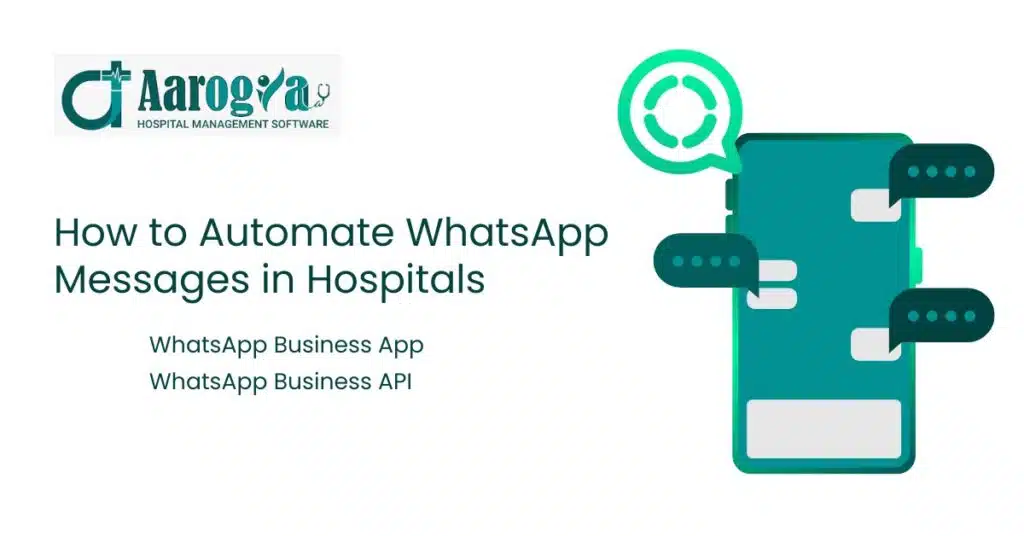
If a hospital already has hospital management software, they can request their software vendor to integrate WhatsApp automation into the system. If they’re searching for a new hospital management solution, they should look for vendors offering WhatsApp automation as a feature.
For hospitals without any software, WhatsApp Business App is a free option. However, it has limitations.
WhatsApp Business App allows you to set up:
- Greeting message
- Away message
- Custom schedule message
- Outside business hours message
To automate WhatsApp messages using the Business App, follow these steps:
1. Open WhatsApp Business App.
2. Tap the three dots in the top-right corner.
3. Open Business Tools.
4. Tap ‘Greeting/ Away Message’.
5. Turn on ‘Send Greeting/ Away Message’.
6. Customize the Greeting/ Away Message by editing the auto-generated text.
Limitations of WhatsApp Business App
The WhatsApp Business App, while offering some basic features, falls short in providing comprehensive business communication tools. Key limitations include:
1. WhatsApp broadcast has a limit of 256 contacts. Furthermore, it will reach people who have added you to their contacts.
2. Auto reply feature is not for every use case.
3. There is not any option to track reach, click and analytics.
4. WhatsApp Chatbot integration is not available for customer support.
5. Integration with 3rd party software and CRM is not possible.
6. Messages with clickable buttons can not be sent.
7. Green tick (verification badge) in the name is not possible.
Why Choose Aarogya Hospital Management Software
Aarogya offers seamless integration with various systems to optimize workflows, improve data accuracy, and enhance overall efficiency. Here are the types of integrations supported:
1. WhatsApp
2. ABDM
3. SMS
4. Tally
5. Biometric
6. KIOSKS
Also Read: Top 5 Hospital Management Software in India
Conclusion
Tools like WhatsApp automation are highly beneficial for hospitals and healthcare institutions. This feature can be seamlessly integrated into hospital management software. To leverage the advantages of WhatsApp automation, consider trusted and reliable software solutions like Aarogya and outshine your competitors.
FAQs: WhatsApp Automation in Hospitals
Can I set an automated message on WhatsApp?
Open WhatsApp Business App, Tap the three dots in the top-right corner, Open Business Tools, Tap ‘Greeting/ Away Message’, Turn on ‘Send Greeting/ Away Message’, Customize the Greeting/ Away Message by editing the auto-generated text.
Is WhatsApp automation legal?
Yes, WhatsApp automation is legal. You can automate it by WhatsApp Business App or WhatsApp Integration API. Hospitals should look for HMIS solutions with integrated WhatsApp feature.
Is there AI in WhatsApp?
Yes, recently Meta has introduced AI chat in WhatsApp. There is a round circle in the home screen of Whatsapp for AI chat. Also, a search-bar like icon on top of the home tab is there to start AI chat.
Is WhatsApp API free?
No. WhatsApp automation charges are included in the HMIS software solution. It also depends on vendors if they charge for WhatsApp API or not. Meta charges for it to the vendors.
What is an example of WhatsApp automation?
Welcome and away messages are examples of WhatsApp automation. Appointment reminders, offers and discounts are some other examples of it.
In case of any query or personal assistance, Please Contact Us.
Why Your Ayurveda Clinic Needs ERP Software Instead of Papers
The Challenges of Paper-Based Systems in Ayurveda Clinics
Paper-based processes are outdated and incorporate numerous challenges in modern healthcare, especially in the specialized fields like Ayurveda. Here are some key challenges:
Patient Care and Experience
Paper-based systems make prior appointment booking difficult and susceptible to manipulation by staff. Patients often have to check in at clinics and wait for their turn, leading to crowded and chaotic environments. In particular, waiting times are critically important in inpatient departments (IPDs).
Accessing patient records and history can delay the treatment initiation. Furthermore, handwritten prescriptions or information can be misinterpreted or lost. This could lead to medication errors.
Overall, long wait times, treatment delays, increased risk of errors and inefficient processes negatively impacts patient satisfaction.
Data Management and Accessibility
In paper-based systems, patient information is stored in paper files and these records occupy physician space. The storage of these files is itself a challenge, especially when you are dealing with hundreds of patients everyday. As per Indian Health Facility Guidelines, medical records must be kept for at least 10 or 15 years after last attendance.
The retrieval of these patient records is very difficult and time consuming. These records are susceptible to loss, damage, or unauthorized access. This raises the concern of data security.
Also, the information is not easily available for remote location users and multiple users.
Manual & Error-Prone Processes
In manual processes, staff need to manage patient data and do calculations on their own which can lead to inaccuracies in the processes. The chances of error in manual processes are much higher compared to Ayurveda software. This could affect patient records, their test reports, billing as well as inventory management.
Limited Scalability
Ayurveda clinics with a small number of patient inflow can manage the clinic without Ayurveda software but with the time, the number of patients in the clinic grows so managing increasing volumes of paper records becomes very challenging.
Compliance and Regulatory Issues
The risk of non-compliance without Ayurveda Software is higher as the auditing, maintaining, privacy, and confidentiality of paper records are difficult and time consuming. It requires human resources and chances of error are high.
Difficulty in Analysis
Software for Ayurveda Clinics generates various reports to analyze data and your clinic business. Without tools like Ayurveda software, reports generation and good understanding of your business is very difficult. Such reporting helps in decision making. You will be able to make informed decisions that could grow your clinic exponentially.
Essential Features of an Ayurveda Clinic ERP
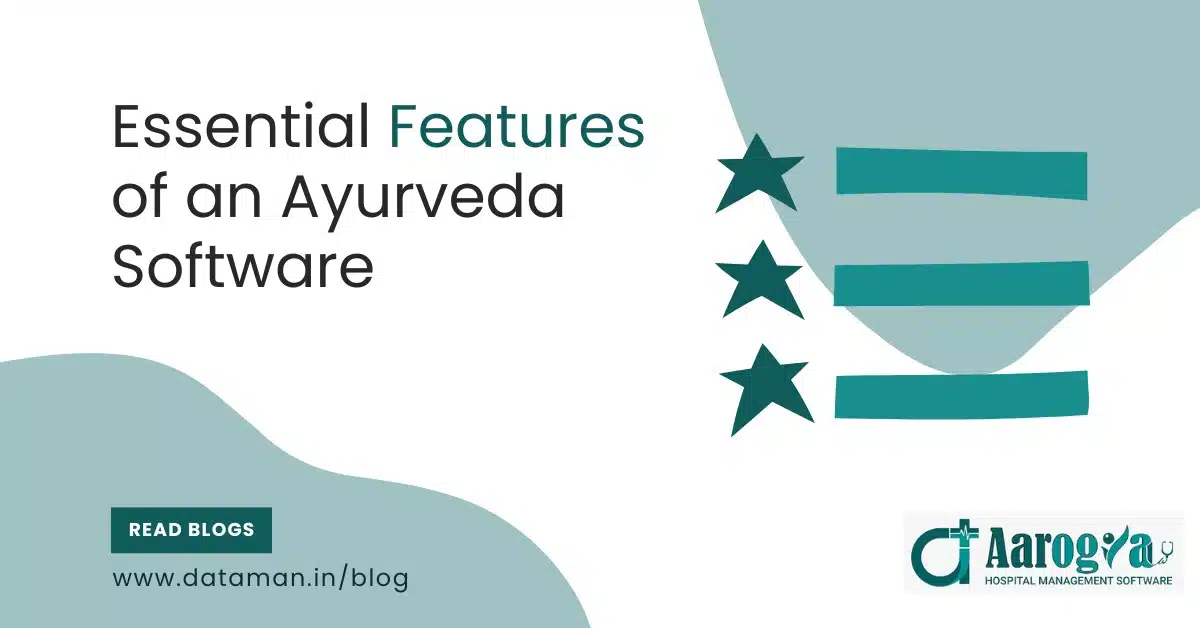
Centralized Patient Records
One of the most important features of Ayurveda Software is to store and manage patient records securely. Comprehensive and accurate patient information including medical history, treatments, prescriptions and appointments is stored in the system. This information can be accessed instantly from anywhere, any device by any authorized user. The software for the ayurveda clinic eliminates the need for paper completely.
Appointment Scheduling and Reminders
The user-friendly interface of ayurveda software allows practitioners and patients schedule their appointments online. The system checks real time availability and allows them to choose suitable time slots. Furthermore, the system sends automated reminders and notifications via email, SMS, What’sApp or mobile app. Users can book appointments 24/7 from any device and any location.
Inventory Management
Apart from patients, there are a lot of things to track and manage like ayurveda products, supplies, resources, equipment, etc. Basically these are the assets of any Clinic. The software for ayurveda clinics tracks and manages the inventory levels in real time. It also sends automated alerts for low stock and generates purchase orders for replenishment. The software ensures efficient stock rotation, minimizes waste and optimizes inventory control.
Billing and Invoicing
Ayurveda ERP software can help you manage financial matters effortlessly. The software generates bills and invoices for treatments and services all by itself. The system integrates with payment gateways seamlessly to facilitate secure online payments along with cash payments. The software keeps track of money owed, when payments are made, and how much is still unpaid. This helps you stay on top of your clinic’s finances.
Analytics and Reporting
A robust ayurveda software lets you generate various reports on clinic performance, revenue analysis, patient trends, data forecasting and many more. These reports can be generated in different graphs and styles.
Intuitive dashboards of the software lets you visualize charts, analyze data for easy interpretation. It helps you identify growth opportunities, track key metrics and make informed decisions for your clinic.
Performance Tracking
Performance tracking is a critical feature within Ayurveda software that empowers clinics to measure and optimize their operations. By generating comprehensive reports on patient demographics, treatment outcomes, and financial performance, clinics gain invaluable insights into their strengths and areas for improvement.
This data-driven approach enables informed decision-making, allowing practitioners to identify effective treatment modalities, target specific patient segments, and enhance overall clinic efficiency.
Data Security
Ayurveda software prioritizes robust security measures to safeguard sensitive patient information. This includes robust encryption, access controls, and regular security audits. A reliable software solution should adhere to international standards of data management like HIPAA, HL7, DISHA etc., ensuring patient confidentiality and building trust between the clinic and its patients.
By investing in software with advanced security features, Ayurveda clinics can protect patient data from unauthorized access, breaches, and misuse.
Regulatory Compliance
Ayurveda practices operate within a complex regulatory framework. Adherence to these regulations is crucial to maintain credibility and avoid legal issues. A robust Ayurveda software solution incorporates features designed to ensure compliance.
It often includes tools for generating compliance reports, making it easier to demonstrate adherence to regulatory standards.
Essentially, Ayurveda software serves as a digital compliance officer, safeguarding your clinic’s reputation and operations.
Communication Tools
Ayurveda software helps you communicate with your staff and patients directly. You can send them messages, special offers, and helpful information. This helps you build a good relationship with your patients.
The software also lets you collect feedback like what patients think about your clinic. You can use this feedback to make things better for your patients and improve how people see your clinic.
Why Choose Aarogya

Aarogya Ayurveda Software is a comprehensive solution designed to automate and optimize ayurveda clinic operations and enhance patient care. This cutting-edge software empowers clinics to efficiently manage patient records, appointments, and treatments while maintaining a holistic approach to wellness.
By leveraging Aarogya, healthcare providers can expect enhanced operational efficiency through features such as appointment scheduling, inventory management, billing, invoicing, patient data management, regulatory compliance, data security and more. Additionally, the software offers valuable insights through robust analytics and reporting, enabling data-driven decision-making to optimize clinic performance.
Conclusion
Like general hospitals, Ayurveda clinics too can leverage technology to enhance patient care and operational efficiency. Ayurveda Software offers a robust solution to streamline various aspects of clinic management, from patient records and appointments to inventory control and financial management.
By adopting a robust ayurveda software, practitioners can ensure the smooth functioning of their clinics. As Ayurveda continues to gain global recognition, incorporating technology becomes essential to meet the growing demands of patients and maintain a competitive edge.
Have Questions? Contact Us today.
Ayurveda Hospital Management Software
Ayurveda is a traditional medicine system native to India. With its holistic approach to health and wellness, Ayurveda hospitals and Health & Wellness Centres (HWCs) are becoming increasingly common these days. The government is also supporting such proven traditional treatments by the ministry of AYUSH.
As per a report by Ministry of AYUSH, there are a total 2975 Ayurveda hospitals and 18021 Ayurveda dispensaries across the nation as on 01.04.2019. Furthermore, the ministry has approved for operationalization of 4448 AYUSH Health & Wellness Centres (HWCs) and the setting up of 104 units of up to 50 bedded integrated AYUSH hospitals. The number of HWCs will go up by 12500 by the year 2023-24.
To manage high inflow of patients and such a complex healthcare setup ayurveda practitioners and hospitals require efficient management tools. This is where Ayurveda Hospital Management Software (AHMS) comes in.
What is Ayurveda Hospital Management Software?
Ayurveda treatments are special and have many steps. It’s hard for people to remember everything they need to do, like when to do things and how to do them right. If they forget, it can ruin the treatment and hurt the business.
Ayurveda also includes things like yoga and physical therapy, which need to be managed carefully.
That’s why Ayurveda Hospital Management Software is important. It’s a comprehensive software solution tool designed to streamline and automate various operations in an Ayurveda hospital. It’s like a digital assistant that helps manage everything from patient records to billing and inventory.
It’s like the backbone of your hospital, ensuring smooth functioning and accurate data management.
Key Features of Ayurveda Hospital Management Software
An effective AHMS should offer a comprehensive suite of features to cater to the unique needs of an Ayurveda hospital. Let’s explore some essential features:
Appointment Scheduling
- Efficient management of appointments for doctors, patients, and therapies.
- Reminders and notifications to avoid missed appointments.
- Optimization of appointment slots for maximum utilization.
Patient Management
- Centralized patient database with detailed medical history, including Ayurvedic treatments, consultations, and prescriptions.
- Online patient registration and portals for easy access to information.
- Integration with electronic health records (EHR) for seamless data sharing.
Doctor Management
- Doctor profiles with qualifications, specializations, and availability.
- Consultation scheduling and management.
- Digital prescription generation and storage.
- Integration with telemedicine platforms for virtual consultations.
Inventory Management
- Tracking of Ayurvedic herbs, medicines, and supplies.
- Automated reorder alerts to prevent stockouts.
- Batch and expiry date management for quality control.
- Integration with pharmacy modules for dispensing and billing.
Billing and Financial Management
- Patient billing and invoicing, including various payment options.
- Insurance claims management and integration.
- Financial reporting and analytics for better decision-making.
- Integration with accounting software for seamless financial management.
Report Generation
- Customizable reports on patient demographics, treatment outcomes, and financial performance.
- Data analytics to identify trends and improve operational efficiency.
- Compliance reports for regulatory requirements.
Integration with Other Systems
- Compatibility with laboratory information systems (LIS) for seamless data exchange.
- Integration with telemedicine platforms for remote consultations.
- Integration with payment gateways for online transactions.
Choosing the Right Ayurveda Hospital Management Software
Selecting the right Ayurveda Hospital Management Software is crucial for the positive growth of your hospital. You should consider the following factors:
- Features: Ensure the software offers all the necessary functionalities for your hospital.
- Scalability: Choose a software that can accommodate your growing needs.
- User-Friendliness: Opt for a system with an intuitive interface for easy use by staff.
- Security: Prioritize data security to protect patient information.
- Cost: Evaluate the pricing structure and compare it with the benefits offered.
- Vendor Support: Consider the vendor’s reputation, customer support, and training options.
Aarogya: Ayurveda Hospital Management Software
Aarogya is a reliable cloud-based Ayurveda Hospital Management Software that is highly customizable as per the requirements of the clients. The system seamlessly integrates with the existing systems and add-on tools.
The software is ABIM-certified and follows the international standards of data management i.e. HIPAA and HL7. Aarogya has on-boarded more than 5000 clients in its client base and it is present in more than 100 cities.
To learn how Aarogya can help you manage your Ayurveda practice or hospital, Contact Us.
Conclusion
Ayurveda Hospital Management Software is a valuable tool for modernizing your Ayurveda practice. By automating processes, improving data management, and enhancing patient care, AHMS can contribute significantly to the growth and success of your hospital. Embrace technology to deliver exceptional healthcare services and stay ahead of the competition.
Top 10 Construction Companies in India
The Indian construction industry is a vital engine of the country’s growth, contributing significantly to its GDP. It is the second largest contributor to the GDP after the agricultural sector. As the industry surges towards a value of INR 2.48 trillion in India, it’s imperative to recognize the leading companies shaping this landscape. Among these, a few stand out as industry giants, renowned for their expertise, project execution, and overall impact.
In this blog, we unveil the top 10 construction companies in India, based on factors like reliability, completed projects, revenue, and industry impact.
1. L&T Construction Ltd.
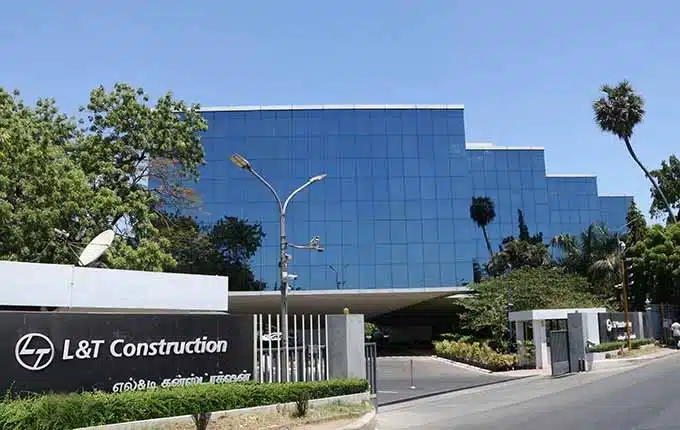
L&T Construction, the construction arm of the L&T Ltd, was founded on 7 February 1938 by two engineers from Denmark, Henning Holck Larsen and Soren Kristian Toubro. Headquartered in Mumbai, It is an Indian multinational company involved in Construction, EPC projects, Hi-Tech Manufacturing and Services. The company operates in over 50 countries worldwide.
L&T construction holds the top position in the list of top 10 construction companies in India. The company is listed in BSE and NSE and it has a super impressive track record in every dimension. The company is dedicated to delivering quality and excellence whether it’s public infrastructure, high rise buildings, or complex and giant developments.
Some of the notable projects of L&T construction are Ahmedabad metro, Statue of Unity, Kochi Metro, Delhi Metro, Underground Chennai metro, high-speed rail, rapid transit, Hyderabad metro, Kakrapar nuclear power plant, Kalpakkam nuclear power plant, one hydro project in bhutan etc.
| Company | L&T Construction |
| Parent Company | Larsen & Toubro (L&T) Ltd. |
| Founded In | February 7, 1938 |
| Headquarter | Chennai, Tamil Nadu |
| CEO | S N Subrahmanyan |
| Revenue | 2.25 lakh crores INR |
| Website | L&T Construction Website |
2. Shapoorji Pallonji Group

Shapoorji Pallonji Group has a trusted legacy in engineering and construction excellence. It is one of the oldest and reputed construction companies in India. It was founded in 1865 by Pallonji Mistry. The group has 15 major companies contributing end-to-end in 6 business segments. With over 35000 workforce, the company has delivered many megastructures and iconic landmarks. Shapoorji Pallonji is regarded as one of the most valuable private enterprises.
The group’s exceptional work and extensive portfolio have propelled it into a strong position among India’s top 10 construction companies. Their portfolio involves:
- 190+ marine work,
- 150+ bridges, flyovers,
- 120+ Kilometres of elevated/underground Metro,
- 20+ data centre projects,
- 4500+ Km of road lanes,
- 9 turnkey data centres,
- 9 tunnels & hydro works,
- 9 general infrastructure
- 45+ projects overseas
Some of prominent megastructures of SPCL group are:
- Reserve Bank of India, Mumbai
- Madhya Pradesh Secretariat
- Telangana Secretariat
- Bombay Stock Exchange
- Atal Tunnel
- Chenab River Bridge
- Varanasi Smart City
- Kartavya Path
- IKEA Bengaluru
- Amazon IT Services Campus
- Delhi, Chennai, Kanpur, Nagpur, Kolkata, Pune Metro
- Agra–Lucknow Expressway
- Udhampur–Jammu Expressway
| Company | Shapoorji Pallonji Group |
| Founded In | 1865 |
| Headquarter | Mumbai, Maharashtra |
| CEO | Shapoor Pallonji Mistry |
| Revenue | 33,375 Crore INR |
| Website | shapoorjipallonji.com |
3. GMR Group
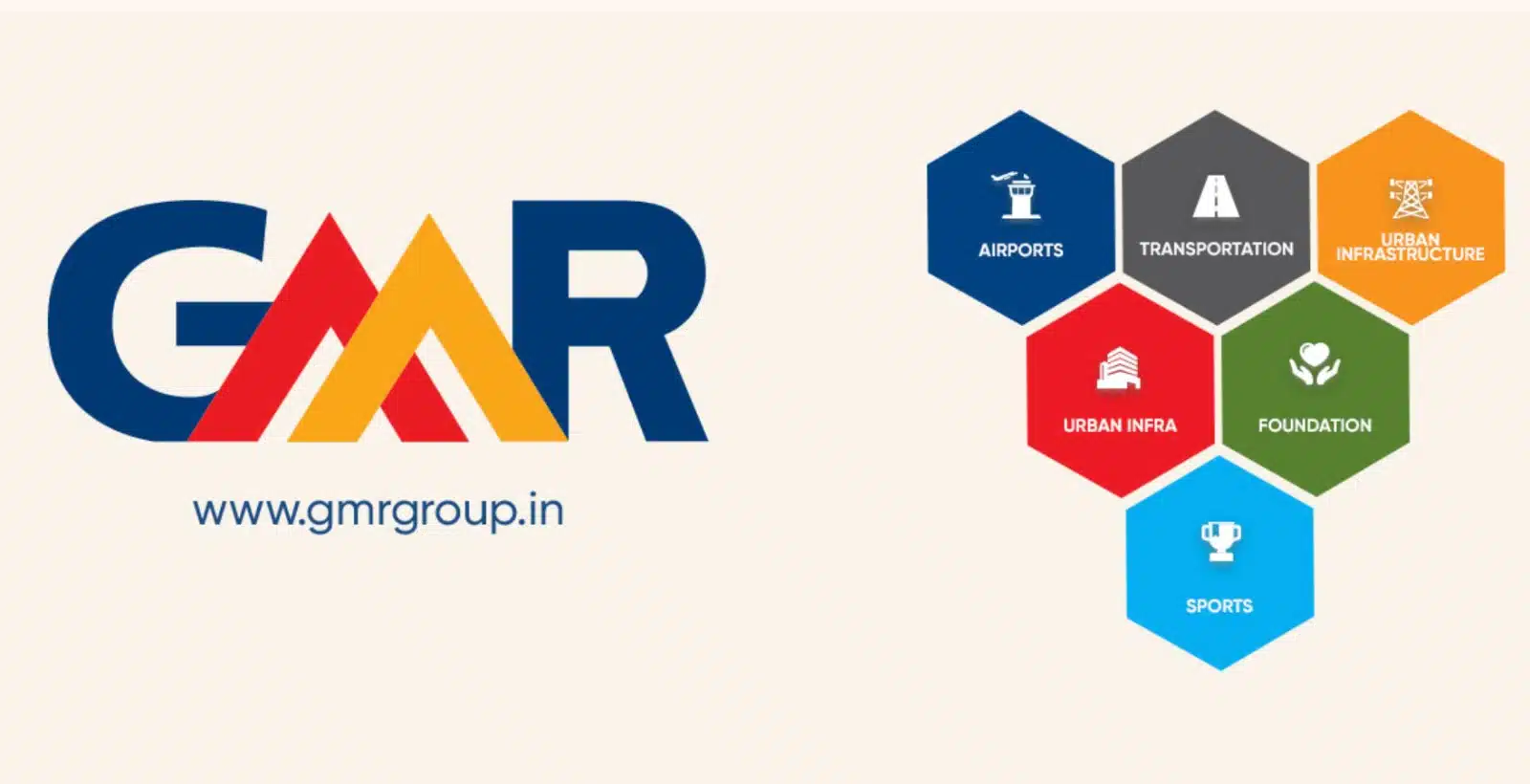
Based in New Delhi, GMR Group is one of the top 10 construction companies in India. The group was founded by Grandhi Mallikarjuna Rao in 1978. The diverse portfolio of the group includes airports, energy, transportation, urban infrastructure, services business, sports and foundation.
GMR is the 2nd largest private airport operator in the world operating 6 airports (Delhi, Goa, Hyderabad, Bidar, Delhi Airport Cargo, Hyderabad Air Cargo, Mactan Cebu in Philippines, Kualanamu in Indonesia) worldwide. Furthermore, 2 airports (Visakhapatnam, Crete in Greece) are under development.
GMR Group operates in divorce sectors through its subsidiaries like GMR Airports, GMR Energy, GMR Power and Infrastructure etc.
| Company | GMR Group (Grandhi Mallikarjuna Rao) Group |
| Founded In | 1978 |
| Headquarter | New Delhi |
| CEO | G Subba Rao |
| Revenue | $1.05 Billion |
| Website | gmrgroup.in |
4. Reliance Infrastructure Ltd.
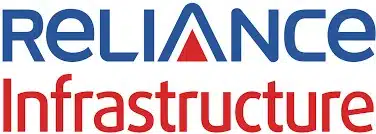
Reliance Infrastructure is a big name when talking about top 10 construction companies in India. Part of the Reliance Anil Dhirubhai Ambani Group, the company was founded in 1929 by Anil Dhirubhai Ambani. It has built many important things like roads, power stations, and even parts of the Mumbai Metro.
One of their biggest projects is the Mumbai Metro. They also helped build ways to send electricity and made roads better in many parts of India.
Because of how good they are at finishing projects on time and without wasting money, Reliance Infrastructure is one of the top 10 construction companies in India. They started as a small company called Reliance Energy Limited but have grown really fast to become a very important player in the country’s power sector.
Now, they do many things like making electricity, building things, and even helping with defense. This company is led by Anil Ambani and Lalit Jalan. They have offices in Mumbai and are known for being very good at what they do.
Reliance Infrastructure is more than just a construction company; it’s helping to shape India’s future. They are one of the top 10 construction companies in India and are making a big difference.
| Company | Reliance Infrastructure Ltd. |
| Founded In | 1929 |
| Headquarter | Mumbai, Maharashtra |
| CEO | Punit Garg |
| Revenue | 19,132.55 crores INR |
| Website | Reliance Infrastructure Website |
5. Tata Projects

Headquartered in Mumbai, Tata projects was founded by J R D Tata in 1979. It is an Indian technology led – engineering, procurement and construction (EPC) company with more than 6500 employees worldwide. Being a subsidiary of Tata Sons, the company has made a good reputation in the construction field.
In FY24, Tata Projects touched revenue of 18045 crore INR, making it one of the top 10 construction companies in India. With a strong foundation in refineries, petrochemicals, and real estate, the company offers end-to-end solutions for complex infrastructure projects. Our expertise spans the construction of highways, bridges, railways, and airports.
To name a few, HRRL refinery, new parliament building, Noida International airport, Dravyavati river Rejuvenation project, Tata Eden court, Tata Inora Park are some of the big projects of the company.
Tata projects also deals with residential properties focusing on medium and luxury categories. Their concentration is to supply high end apartments and flats.
| Company | Tata Projects |
| Parent Company | Tata Sons |
| Founded In | 1979 |
| Headquarter | Mumbai, Maharashtra |
| CEO | Vinayak Pai |
| Revenue | 18,045 crores INR |
| Website | Tata Projects Website |
6. Macrotech Developers

Macrotech Developers (formerly known as Lodha Group) is a prominent player in the Indian real estate and construction industry. The group was founded by Mr. Mangal Prabhat Lodha in 1980. The company is mainly involved in the residential projects with the focus in creating high-quality, luxurious apartments.
The Lodha Group has a reputation for innovation and attention to detail. They have played a significant role in transforming skylines across major cities like Mumbai, Thane, Hyderabad, and Pune. Their commitment to sustainability and use of modern technology sets them apart.
A testament to their expertise is the World One tower, which once held the title of the world’s tallest residential building. This iconic structure exemplifies their dedication to pushing boundaries and creating architectural marvels.
| Company | Macrotech Developers (Lodha Group) |
| Founded In | 1980 |
| Headquarter | Mumbai, Maharashtra |
| CEO | Abhishek Lodha |
| Revenue | 9,230 crores INR |
| Website | lodhagroup.in/home |
7. Punj Lloyd
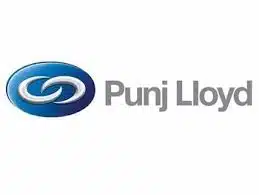
An internationally recognized EPC (Engineering, Procurement, Construction) company, Punj Lloyd offers integrated design, engineering, procurement, construction, and project management services for infrastructure projects within the energy sector. Established in 1982, Punj Lloyd has a strong track record of delivering major projects, including the Salalah LPG Extraction Project in Oman and the Dabhol Power Project in India.
Founded in 1982 by Atul Punj, the company has grown from strength to strength, expanding its operations globally. With a revenue of INR 5,585.77 crores, Punj Lloyd has established itself as a major player in the construction arena. Its expertise lies in engineering, procurement, and construction (EPC) services, making it a preferred choice for complex projects.
From building highways and bridges to developing metro systems and power plants, Punj Lloyd’s portfolio is diverse and impressive. The company’s commitment to quality, safety, and sustainability has earned it a reputation for excellence.
| Company | Punj Lloyd |
| Founded In | 1982 |
| Headquarter | Gurugram, Haryana |
| CEO | J P Chalasani |
| Revenue | 4412 Crore INR |
| Website | punjlloydgroup.com |
8. Gammon India Ltd

Founded in 1922 by John C. Gammon, Gammon India Ltd. is one of the largest civil construction companies in India. The company is headquartered in Mumbai, Maharashtra. The company specializes in infrastructure, development, transportation, power and water. Gammon India has built many big and important things, like the Bandra-Worli Sea Link and the Mumbai-Pune Expressway, Konkan Railways, etc.
| Company | Gammon India Ltd. |
| Founded In | 1922 |
| Headquarter | Mumbai, Maharashtra |
| CEO | Ajit Balubhai Desai |
| Revenue | 52.84 crores INR |
| Website | gammonindia.com |
9. IRB Infrastructure Developers Ltd.

IRB Infra is India’s leading and the largest integrated multinational transport infrastructure developer in the Highways sector, making them one of the top 10 construction companies in India.
The company has executed the country’s first build-operate-transfer (BOT) road project. It is also the leader in that segment. At present, 3404 lane Km is operational and about 2330 lane Km under development.
Some of the major projects of one of the best construction companies, IRB infrastructure developers are Mumbai–Pune Expressway, Ahmedabad–Vadodara Expressway, Ganga Expressway, etc.
| Company | IRB Infrastructure Developers Ltd. |
| Parent Company | IRB Group |
| Founded In | 1998 |
| Headquarter | Mumbai, Maharashtra |
| CEO | Ajay Deshmukh |
| Revenue | 2,750.27 crores INR |
| Website | irb.co.in/home |
10. Hindustan Construction Company (HCC)

Hindustan Construction Company (HCC) was founded by Seth Walchand Hirachand in 1926. The company specalizes in transportation, hydroelectric power projects, nuclear power projects, water solutions, buildings and industries.
Some of the major projects of HCC include Bandra–Worli Sea link, Mumbai–Pune Expressway, Bogibeel Rail-cum-Road bridge, Kudankulam Nuclear Power Plant, Nimoo Bazgo Hydro Power Project, etc.
The company has contributed 60% of India’s installed nuclear power capacity and 26% of India’s installed hydro power capacity.
| Company | Hindustan Construction Company (HCC) |
| Founded In | 1926 |
| Headquarter | Mumbai, Maharashtra |
| CEO | Arjun Dhawan |
| Revenue | 11,152 crores INR |
| Website | hccindia.com |
Final Words
As the construction sector is the second largest contributor to the GDP, the top 10 construction companies in India are at the forefront for the future of the country. Their projects not only enhance quality of life but also lay the foundation for a stronger, more prosperous India.
